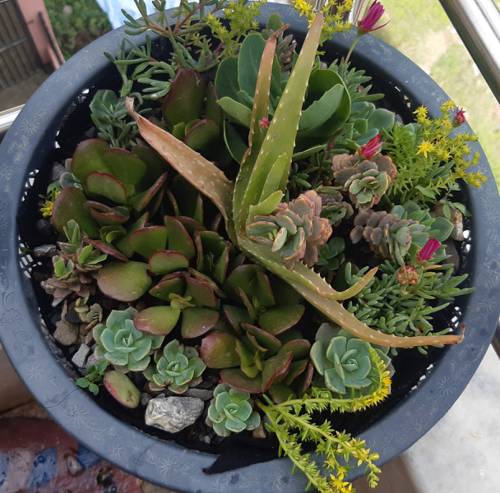
FAQ About Indoor Plants with Natural Pest Repellents

What are some indoor plants that naturally repel pests?
Certain indoor plants have natural properties that help repel common household pests. Some of these plants include:
- Lavender: Known for its pleasant fragrance, lavender helps repel moths, fleas, mosquitoes, and flies.
- Basil: This herb is effective in deterring flies and mosquitoes.
- Mint: Known to repel ants, mosquitoes, and flies.
- Rosemary: Can help keep mosquitoes and other insects at bay.
- Marigold: Emits a scent that repels mosquitoes and other flying insects.

How do indoor plants repel pests?
Indoor plants repel pests through natural compounds found in their leaves and flowers. These compounds produce scents or oils that are unpleasant or toxic to certain insects. For example, essential oils such as citronella, eucalyptol, or camphor are common in plants like lavender and eucalyptus, which naturally deter pests like mosquitoes. The distribution of these oils into the air can act as a natural pest repellent throughout your home.

Can indoor plants completely eliminate pests in a home?
While indoor plants with natural pest-repelling properties can significantly reduce the presence of some pests, they are unlikely to completely eliminate all pests in a home. These plants serve as a natural deterrent and can be part of an integrated pest management strategy that includes proper sanitation, sealing of entry points, and other control measures to effectively manage pest populations.

Are there any health benefits of having indoor plants that repel pests?
Yes, indoor plants offer several health benefits aside from just repelling pests. They can improve air quality by absorbing carbon dioxide and releasing oxygen, increase humidity, and promote a sense of well-being and relaxation. Additionally, some plants like lavender may help in reducing stress levels and enhancing sleep due to their soothing fragrance.

Is it safe to have pest-repelling plants around children and pets?
While many pest-repelling plants are safe, some can be toxic to children and pets when ingested. For instance, plants like rosemary and mint are generally safe, but caution should be observed with plants like marigold, which can cause irritation. Always research each plant and consider having them in areas that are out of reach of children and pets, or opt for non-toxic varieties.

Do pest-repelling plants require special care to maintain their properties?
Most pest-repelling plants do not require special care beyond regular plant maintenance. Ensuring they have the right amount of sunlight, water, and nutrients will keep them healthy enough to produce the natural compounds that repel pests. Pruning can also help maintain their effectiveness by encouraging growth and ensuring the active parts of the plants, like leaves and flowers, remain vigorous.

Can indoor pest-repelling plants survive in low-light conditions?
Some indoor pest-repelling plants can thrive in low-light conditions, while others require brighter settings. For example, peace lilies, which have moderate pest-repelling qualities against spiders and fungus gnats, can do well in low light. However, plants like rosemary and lavender prefer brighter, sunnier areas to grow effectively and maintain their pest-repelling properties.

How can I incorporate pest-repelling plants into my home décor?
Pest-repelling plants can be integrated into your home décor in various creative ways. Consider using decorative pots and planters that match your interior design. You can also create a small indoor herb garden in your kitchen using basil and mint, or place lavender in bedroom areas as natural decor. Wall-mounted planters and hanging pots can also add a stylish touch while maximizing space.

Do pest-repelling plants attract any beneficial insects indoors?
While pest-repelling plants are primarily known to deter harmful pests, some may attract beneficial insects such as pollinators if placed near windows or on balconies. For instance, while indoors, marigolds might not attract a substantial number of beneficial insects, placing them near open windows can encourage pollinators like bees to visit, indirectly benefiting outdoor gardens.

What is the best way to maintain the potency of an indoor plant's pest-repelling properties?
To maintain the potency of an indoor plant's pest-repelling properties, ensure optimal growing conditions such as adequate sunlight, proper watering, and appropriate soil nutrition. Regular pruning can stimulate growth and ensure that the parts of the plant responsible for repelling pests are robust and healthy. Additionally, avoid using any synthetic fertilizers or chemicals on these plants, as they may interfere with their natural pest-repelling compounds.

Are there specific indoor pest-repellent plants suited for apartments or small spaces?
Yes, there are several compact pest-repellent plants perfect for apartments or small spaces. Plants like basil, mint, and rosemary are relatively compact and thrive in small pots on windowsills or balconies. They provide effective pest-repelling properties without taking up too much space, making them excellent choices for smaller living areas.

Can planting pest-repelling plants outdoors near entry points reduce pests indoors?
Yes, planting pest-repelling plants outdoors near entry points, such as doors and windows, can help reduce pests indoors. Plants like lavender, marigold, and basil, when placed near these areas, can create a natural barrier that deters pests from entering your home. This can be an effective strategy when used alongside indoor pest-repelling plants.

How do I know if an indoor plant is effectively repelling pests?
To determine if an indoor plant is effectively repelling pests, observe the surrounding areas for a decrease in pest activity. Over time, you may notice fewer bugs or insects around the plants or in the immediate vicinity. Monitoring changes in pest prevalence can help assess the effectiveness of the plant's natural repellent properties.

Are all aromatic indoor plants effective at repelling pests?
Not all aromatic indoor plants are effective at repelling pests. While many aromatic plants possess compounds that deter insects, some simply provide pleasant fragrances without any pest-repelling benefits. For instance, plants like lavender and mint are known for their pest-repelling properties, whereas others like gardenia, although fragrant, may not be as effective.

What are the most common pests that indoor plants can repel?
Indoor plants can repel a variety of common household pests, including mosquitoes, flies, ants, moths, and spiders. Each plant may be effective against specific pests due to the compounds they release. For instance, lavender is particularly effective against moths and mosquitoes, while rosemary can deter mosquitoes and other small insects.

Can pest-repelling plants be used in combination with other pest control methods?
Yes, pest-repelling plants can be used in conjunction with other pest control methods for a more comprehensive approach to managing pests. They can complement other strategies such as sealing entry points, using traps, or employing natural sprays, creating an integrated pest management system that reduces reliance on chemical solutions.

Do temperature and humidity levels affect the pest-repelling efficiency of indoor plants?
Temperature and humidity levels can affect the health of indoor plants and, consequently, their pest-repelling efficiency. Most pest-repelling plants thrive at moderate temperatures and benefit from controlled humidity levels to maintain their vigor. For example, rosemary prefers drier conditions and can struggle in high humidity, which, in turn, might reduce its effectiveness at repelling pests.

How should I position pest-repelling plants around my home for maximum effectiveness?
For maximum effectiveness, position pest-repelling plants near entry points like windows and doors to deter insects from coming inside. Placing them in commonly infested areas, such as the kitchen or pantry where insects are often found, can also help keep pests at bay. Rotating plants periodically around different locations in your home ensures an even distribution of their repelling properties.

Are there any drawbacks to using pest-repelling plants indoors?
One potential drawback of using pest-repelling plants indoors is that they may not provide a complete solution to pest problems and may require supplementation with other control methods. Additionally, certain plants might require specific care conditions, and some may be toxic to pets or children. Ensure that you choose plants suitable for your home environment and maintain them for optimal health and effectiveness.

What environmental conditions do pest-repelling plants need to remain effective?
Pest-repelling plants generally require conditions that support their natural growth, including appropriate light exposure, well-draining soil, and regular watering. While specific needs vary by species, maintaining good air circulation and moderate temperatures can enhance their health, allowing them to effectively repel pests. Providing the right care helps them produce the necessary oils or fragrances that keep pests at bay.
